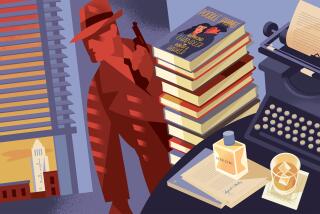Marlowe’s poetically odd life, presented in context
More than 400 years after his death in what was officially described as a drunken brawl, Christopher Marlowe (1564-1593) remains a fascinating, enigmatic, greatly gifted and mysterious character.
As poet and playwright he earned the admiration (and envy) of his peers and exercised a large influence on the literature of the Elizabethan Age, particularly on many of its best and brightest writers, including William Shakespeare. He was praised for his poems, for his translations of Ovid and Lucan, and above all for his plays: the thunder and lightning of “Tamburlaine the Great”; the savagery of “The Jew of Malta”; the shocking horror of “Edward II”; the spooky legend of “Doctor Faustus”; and others that filled the theaters and opened up a wealth of possibilities for a generation of playwrights.
Although he did not invent blank verse, the iambic pentameter beat that has haunted poetry in English since, he transformed it from a rigid hippety-hop into a free and highly flexible instrument, what Ben Jonson called “Marlowe’s mighty line.” His critics, especially among the Puritans, saw him as a paradigm of the life of vice, an atheistic, drunken, blasphemous sodomite (their word), one whose violent death was well-deserved.
He was also known to the law for diverse criminal activities including assault, counterfeiting (a capital crime) and at least one homicide for which he was pardoned. A few knew him as an “intelligencer,” a spy who performed a number of missions at home and abroad.
No surprise, then, that he has captured the attention of scholars and the imagination of many fiction writers, especially in our age of double agents and antiheroes. Among the best of the novels stands Anthony Burgess’ “A Dead Man in Deptford” (1993); the most recent of important scholarly discoveries are to be found in Charles Nicholl’s “The Reckoning: The Murder of Christopher Marlowe” (1994).
David Riggs’ “The World of Christopher Marlowe” brings it all together brilliantly, assembling all evidence of Marlowe’s life and adding to that a wider and deeper focus. What Riggs has done, and done so well, is to place Marlowe squarely in the Elizabethan world, giving us everything we need to know about people, places and institutions, and from which we can justly infer a full story.
We come to know his family and the Canterbury of his childhood. We learn precisely what he studied in school there and then at Corpus Christi College at Cambridge, where he had a scholarship and earned his academic degrees. We know now what he studied and what he ate and drank in the Buttery, where he lived and who his roommates were and what became of them.
We follow him to London and the theater in the 1580s, until the still mysterious evening of May 30, 1593, when Marlowe was killed by Ingram Frizer, who successfully (and a little too easily) claimed self-defense. It was a complex -- and still unsettled -- event involving figures of the highest rank, including some from Queen Elizabeth’s court. We are given the benefit of Riggs’ critical acumen as he examines the poems and plays and relates them to Marlowe’s life and times.
Riggs has long since earned his laurels as a scholar-critic with “Shakespeare’s Heroical Histories” and “Ben Jonson: A Life.” Here he does a superb job, bringing together a treasury of pertinent information about Marlowe and his age, all the while maintaining a smooth narrative flow. Scholarly apparatus -- notes, bibliography, index and illustrations -- is at once thorough and unobtrusive.
This book should be the definitive account of Marlowe and his world for a long time to come.
George Garrett is the author of the 1990 novel about the murder of Christopher Marlowe, “Entered From the Sun.” His latest novel is “Double Vision.”
More to Read
The biggest entertainment stories
Get our big stories about Hollywood, film, television, music, arts, culture and more right in your inbox as soon as they publish.
You may occasionally receive promotional content from the Los Angeles Times.








